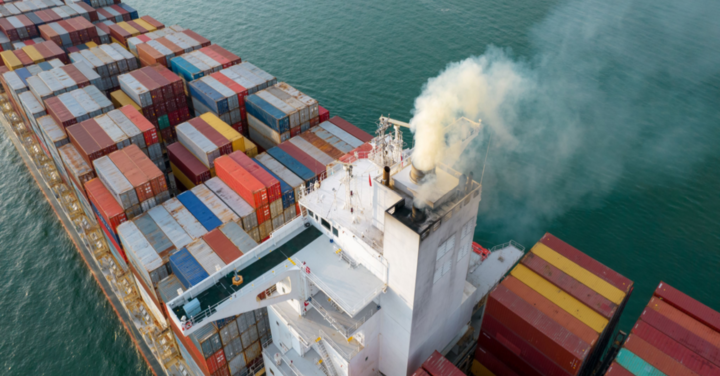
Best Practices to Track, Measure, and Reduce Container Ship Emissions
Ocean shipping has long been the backbone of the global supply chain. While demand continues to rise, the concern over container ship sustainability, i.e., methane, nitrogen oxides, and carbon emissions, has caused a shift in how businesses optimize shipping services. Due to COVID-related shutdowns and supply chain disruptions, massive growth in the demand for goods by consumers has translated into an enormous increase in global ocean demand as imports of goods to various ports rose, causing unprecedented port congestion and container rate increases.
The volatility and strains stemming from increased demand on container shipping might make it seem that reducing CO2 emissions of cargo ships and through all inland moves is not a priority. For example, the longer ships idle at sea due to port congestion for loading and unloading will impact fuel use and emissions. Similarly, not choosing the right inland modes will lead to additional emissions.
Moreover, tracking this data is challenging at best. Still, with proper, accurate, and SFC-accredited tools, shippers can reduce emissions by choosing lanes and carriers that have a lower emission impact. This article will provide best practices and resources to track container ship emissions.
The Impact Cargo Emissions Have on the Climate and the Chain Reaction it Causes
When most supply chain professionals think about greenhouse gasses, they think of trucks and planes. Few consider ship emissions because ocean freight is so hidden and off the grid in the eyes of the everyday shipper. However, it is a significant contributor and plays a massive role in the chain reaction seen and felt across the supply chain.
Today’s companies are working to reduce the impact and volume of carbon emissions, and it’s working. As the Smart Freight Centre highlighted, “Between 2015 and 2019, CO2 emissions per container carried have dropped by 9.6 percent.” Still, emissions of cargo ships are growing along with the demand for more capacity on cargo ships and all other modes. Changes must occur sooner rather than later for calculating CO2 emissions, so companies see the impact of each lane to reduce the ocean freight industry’s environmental impact. The reality is that many existing companies rely on outdated and stale assumptions in calculations.
When calculating carbon emissions using an arbitrary average, all subsequent reporting falls short of genuine insight into the shipment’s actual emissions. As time passes, using an average emission measurement vs. the exact measurement of emissions produced by the container ship’s movement exacerbates the problem of inaccurate carbon emission measurement. In turn, it’s impossible to figure out the exact emissions data without accurate, accredited resources.
Ways to Lower Container Ship Emissions and Reduce Environmental Impacts
Getting to the bottom of sustainable practices and practical ways of lowering ship emissions is the factor that provides a competitive advantage for shippers and carriers. Managing ocean freight transportation, voyage planning optimization, and providing better efficiency within container shipping can help the industry respond to the growing demand for more sustainable and eco-friendly ocean freight services. But, of course, it’s always helpful to have a few other ways to lower emissions:
- Use cleaner fuels to reduce ship emissions with every shipment.
- Optimize routes based on the full context of emissions for ocean, rail, road, barge and air.
- Know the greenest carrier routes, service levels and vessels.
- Compare door-to-door emissions using ports that minimize inland transport.
- Assess the impact of mode changes.
- Track emissions around-the-clock.
- Partner with sustainability technology leaders, like Searoutes, to help your team make sense of the raw data and find the best path to meaningful emissions reductions.
It is the responsibility of all parties to take steps to combat ship emissions and improve ocean freight transportation. Small steps add up, and starting somewhere is better than not starting. Furthermore, it must all amount to better algorithms and using data properly, not basing decisions on archaic averages.
Take Serious Steps Today to Reign in Emissions With Searoutes
Access to all-mode carbon emission tracking is the key to managing container ship emissions and effectively tracking or reporting the emissions of cargo ships as well as emissions from all other modes, including barges. Innovative tracking and monitoring systems, real-time communication dashboards, integrated tools, and API-driven calculations can help you accurately track emissions. Partner with industry experts and see how easy it can be to reduce CO2 emissions while delivering fast, reliable, and affordable shipping capability. As an API-first company that recognizes much of the industry relies on manual processes, Searoutes can help your team connect your tech stack or manually process data to generate better insight and optimization opportunities. Contact Searoutes today to get started.